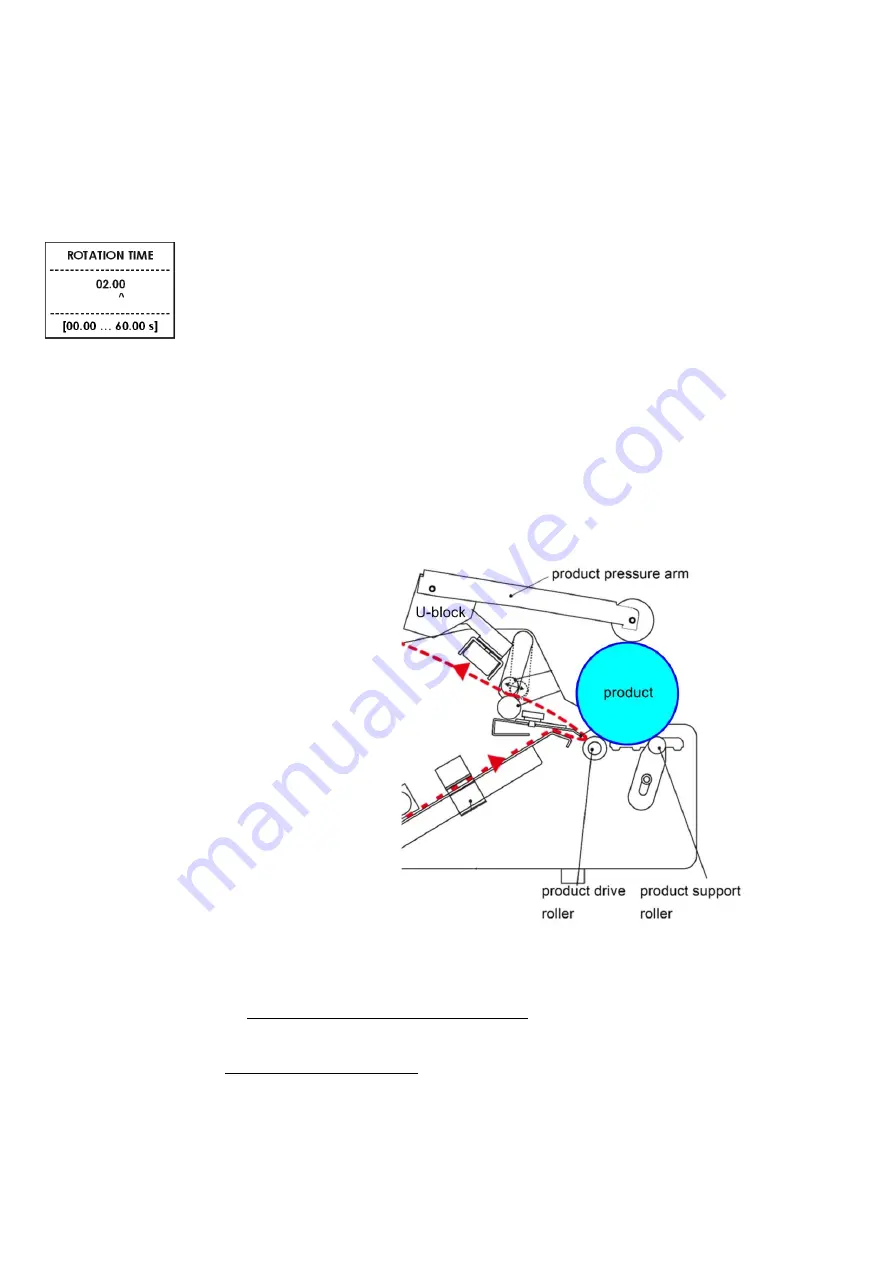
AP16-F User Manual V1.2
Page
18
of
20
IV.
Setting the rotation time:
After confirming the correct stop positions 1 and 2 in the menu, you enter the rotation time in seconds and
confirm. The rotation time is the time the product rotates after the label sensor has detected the end of the
label. Two seconds is a convenient value for most labels. You may decrease the rotation time to speed up
each application cycle if you ensure each label is transferred and firmly attached to the product before
rotation stops.
You are now ready to do a test cycle (paragraph 8.6). Do so before loading a product.
Note
: the calculated stop positions are a good start. Tuning might be required once you start operating.
8.5
Product loading
8.6
Test Cycle
Note
: in “two label mode”
the longest label must be applied first, regardless whether it is the front or back
label! Place the front end of the longest label near the peeling edge before you start.
Carry out the first cycle without a product loaded. After this first run, the front end of the next label-to-be-
applied should be within a few mm from the peeling edge. You may need to fine-tune the stop position. For
example polypropylene (pp) labels tend to be applied better when the front end projects over the peeling
edge. You might need to adjust both stop positions when in 2-label mode.
See picture 10.0. Lift the product pressure arm
and place the cylindric product on the
product drive and product support rollers. You
tune the distance between the driver and the
support roller to the product diameter in such
way it lays steady. The product pressure arm
height should also be adjusted to the product
diameter for easy loading. You do this by
pivoting the aluminum U-block which connects
the arm with the main frame.
During operation you will just pull the pressure
arm slightly up to remove and insert products.
The coil springs will push it back onto the
products.
The orientation and exact position of the
product on the rollers depend on the desired
label position and direction.
We recommend to first do a test cycle before
you start serial production.
Picture 10.0

















